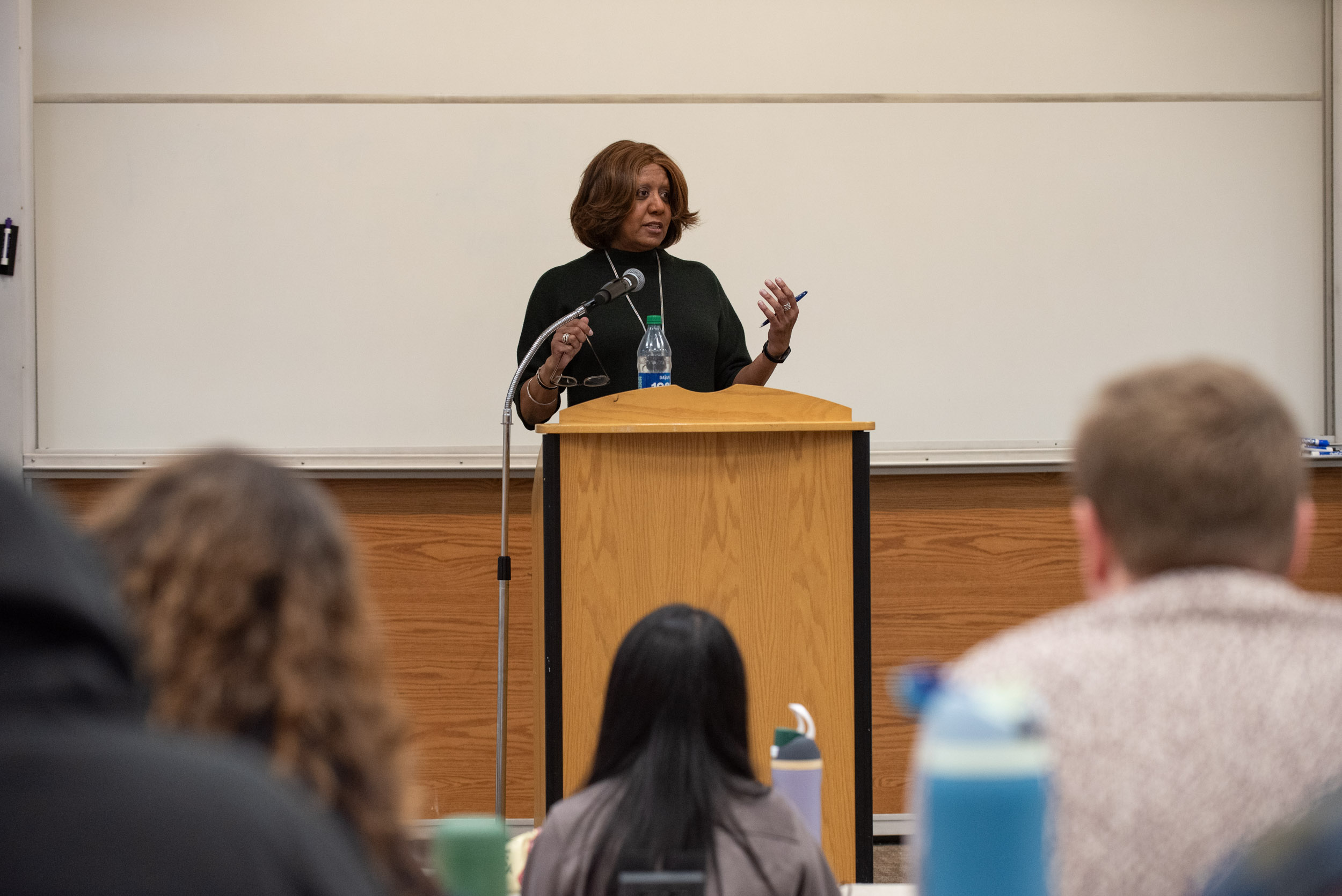As we navigate through the many challenges that law school provides, it becomes increasingly easy to focus entirely on the immediate next step and lose sight of the opportunities that will come down the road. When it comes to thinking about post-graduation work, that often means preparing oneself for a rank-and-file “first job” and forgetting all about what amazing career opportunities await just a few years ahead. The annual Fogel Lecture is an incredible reminder of what a legal career has to offer when we remember to raise our sights and look past the next step to focus on the entire picture.
On February 26, the Honorable Tamara W. Ashford of the U.S. Tax Court delivered the 2025 Fogel Lecture, joining the long list of former and current government officials who have shared their views and career trajectories with the Temple Law community since 2011. Standing in front of nearly 200 law students, faculty, and other legal professionals, Judge Ashford discussed her journey in tax in a lecture titled “For the Love of Tax.”
Tax has been a constant in the career of United States Tax Court Judge Tamara W. Ashford. With the exception of an early pivot or “break-up” when she clerked for Judge John C. Martin of the North Carolina Court of Appeals after graduating from Vanderbilt University Law School, Judge Ashford has always been involved in tax practice. However, something else stood out as she described the many twists and turns of her career—the many twists and turns of her career! Tax might have been a constant, but Judge Ashford did not shy away from new opportunities in her career even when it meant leaving for uncharted territory.
After earning her LL.M. in Taxation from the University of Miami School of Law, Judge Ashford jumped right into public service as an attorney in the Appellate Section of the Tax Division of the United States Department of Justice. It didn’t take long before she was recruited into private practice by Miller & Chevalier, one of Washington D.C.’s top tax boutique firms, working on a tax litigation team representing Exxon Mobil in a refund action in the United States District Court for the Northern District of Texas. From there, Judge Ashford once again returned to the federal government, this time as Special Assistant to the Commissioner of Internal Revenue, an opportunity that she could not pass up even though it meant leaving behind her other great love, litigation. Judge Ashford’s time at the IRS proved to be worthwhile, as she not only had the opportunity to have oversight over the release of IRS published guidance as Special Assistant, but after serving in that role she also served as the Director of the Joint International Tax Shelter Information Centre, a joint task force between English-speaking tax authorities (United States, Canada, England, and Australia) where those authorities exchange information within the legal framework of their bilateral income tax treaties to combat cross-border tax avoidance.
Judge Ashford then returned to private practice, joining the Tax Controversy and Litigation group of Dewey & LeBouf LLP. It wasn’t long before she left to return to the Department of Justice’s Tax Division, serving first as Deputy Assistant Attorney General for Appellate and Review and then as Acting Assistant Attorney General. These experiences, the result of the many twists and turns in her career, are what allowed her to develop“the temperament and skill to be an independent arbiter . . .” and resulted in the crowning achievement of her career—her nomination and confirmation to the United States Tax Court.
Careers have been changing in the United States, and the legal profession has been no exception. The old model of “sticking it out” within the same firm or office, waiting for the coveted promotion to Partner or Director, has been giving way to more fluid career paths that involve switching employers and positions. However, facing applications and interviews—whether it be for a first, second, or tenth job—in the ever-so-competitive market is daunting, and many will resort to trusting the old way to avoid rejection and uncertainty. Looking at the careers of those who, like Judge Ashford, drew their strength from diversifying their roles and position is a prime way to look at the big picture, disband those fears, and take the leap towards new and exciting opportunities.
This content was originally posted on the Temple 10-Q.


